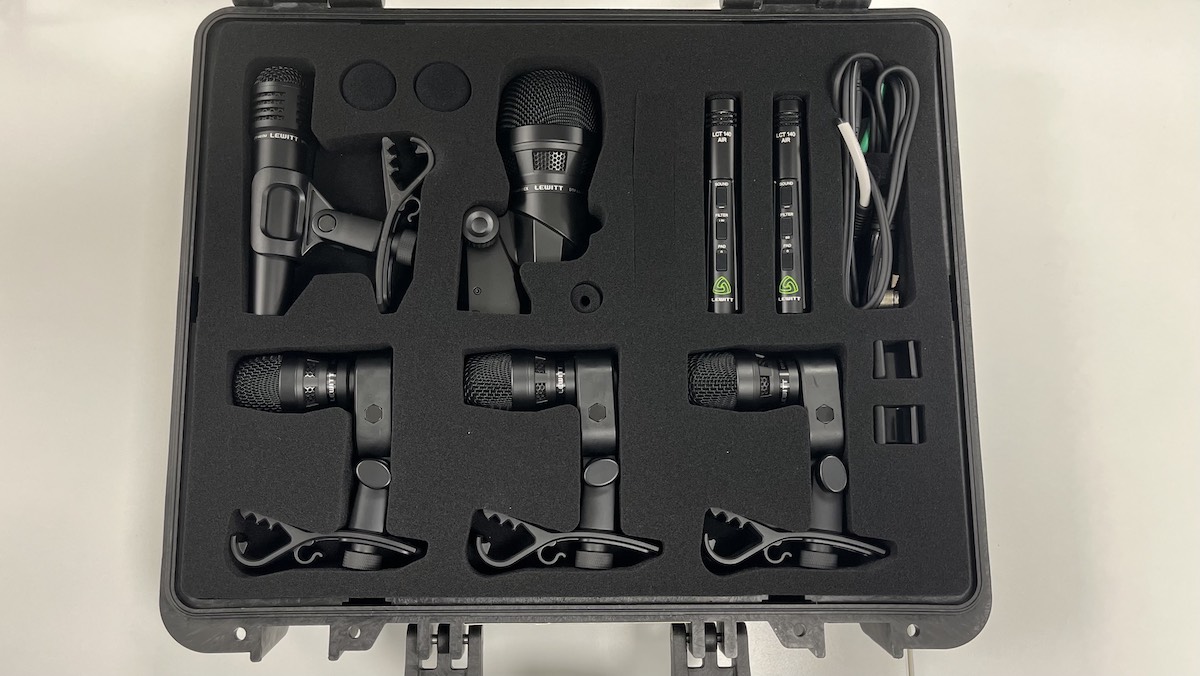MusicRadar Verdict
Overall, the Beat Kit Pro is an impressive, rugged mic set that incorporates – and builds on – some of our favourite design points from popular drum mics, as well as bringing its own identity. It’s no small outlay, but it’s also reasonable for what’s included. We’re confident that it’s an offering that will have you more than covered for both live and recording situations.
Pros
- +
Better value than buying individual mics
- +
Feel built for the purpose of recording drums
- +
Snare and tom mics great out of the box
- +
Fantastic rigid case
- +
Snare and tom holders provided
Cons
- -
Holders are a little flimsy
MusicRadar's got your back
Lewitt Beat Kit Pro review: What is it?
When it comes to gear, drummers are constantly at the ‘more’ end of the spectrum. First there’s our shells, which also require a snare drum, then the cymbals, and once we’ve acquired a full set of ‘noise-makers’ we need a backbreaking amount of chromed metal to beat gravity. But what happens when you want to record or amplify your whole kit? Well, you’re going to need microphones, and if you intend on maintaining control over every drum and the overall balance of your kit in detail, you’ll be needing lots of them.
There are a few routes you can take when purchasing enough mics to capture your kit. First, you can get a collection of identical all-rounder mics and position them around your kit, adding a bass-specific mic for the kick drum and a couple of condensers for overheads. Next, you can put together a piecemeal set of mics - possibly from a mix of brands - chosen specifically for the different elements of your kit. Finally, you can save yourself some research by opting for one of the many drum-oriented mic sets.
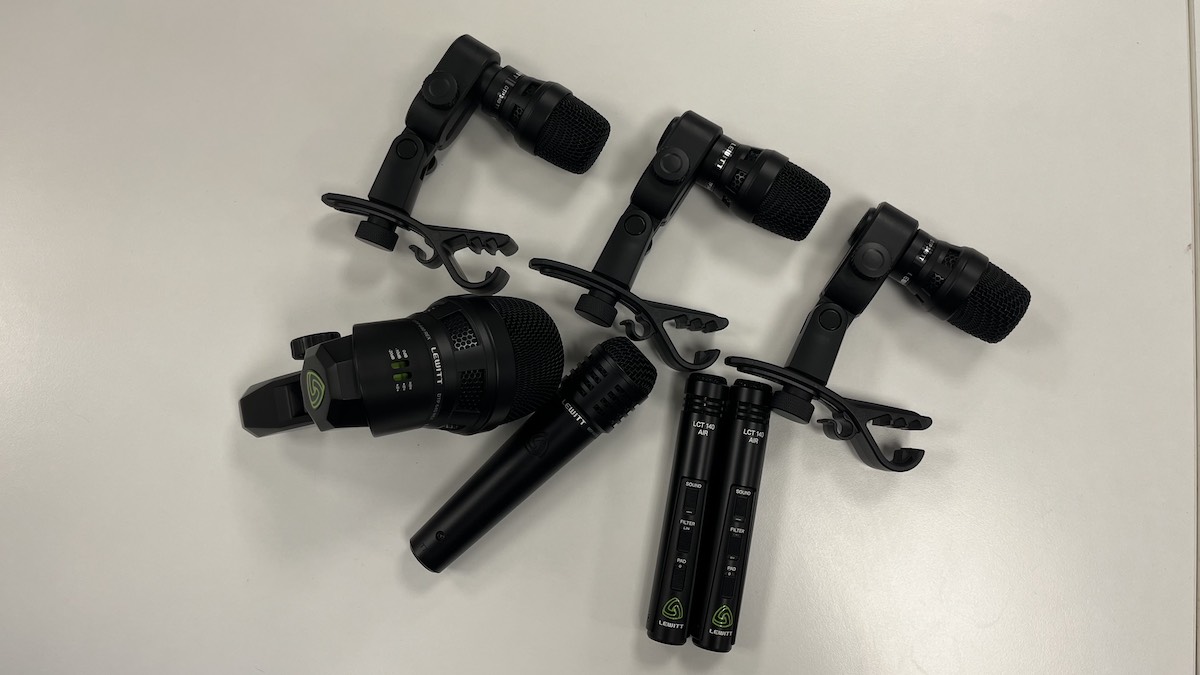
That’s exactly what we have here from Lewitt. Now, while you might not be as familiar with Lewitt as, say, some of the more established names in microphones, you’ll certainly be familiar with its founder’s pedigree. The Austrian company emerged 15 years ago when founder Roman Perschon flew the AKG coop, with an eye on shaking up the microphone market. Offering Austrian design paired with Chinese manufacturing, Lewitt’s catalogue now comprises dozens of mics aimed at recording and live use, and for us drummers the most exciting is the Beat Kit Pro which expands on Lewitt’s other drum pack - the four-piece Beat Kit - by offering a seven-microphone set.
But, it’s not just an increase in the number of mics, in fact, the only constant between Lewitt’s two sets is the MTP 440 DM snare mic. In the Beat Kit Pro, the snare mic is joined by Lewitt’s flagship DTP 640 REX bass drum mic, a pair of small-diaphragm LCT 140 AIR condenser mics, and a trio of DTP 340 TT mics, giving you enough mics to close-mic a five-piece setup with overheads.
The whole kit is supplied in a rather nice, foam-lined heavy-duty Peli-style case that is better quality than some of the more flimsy examples we’ve seen with mic sets, plus Lewitt includes clip-on holders for the snare and tom mics. This may not sound like a big deal, but given that you’re already going to need to factor in some extra money for XLR cables, not having to shell out for an additional seven mic stands is a bonus. Plus, on tight stages or in smaller home studios, the lack of floor-based stands will increase your cat-swinging space, as well as dramatically reducing the risk of anyone tripping/accidentally moving the mics.
Lewitt Beat Kit Pro review: Performance & verdict
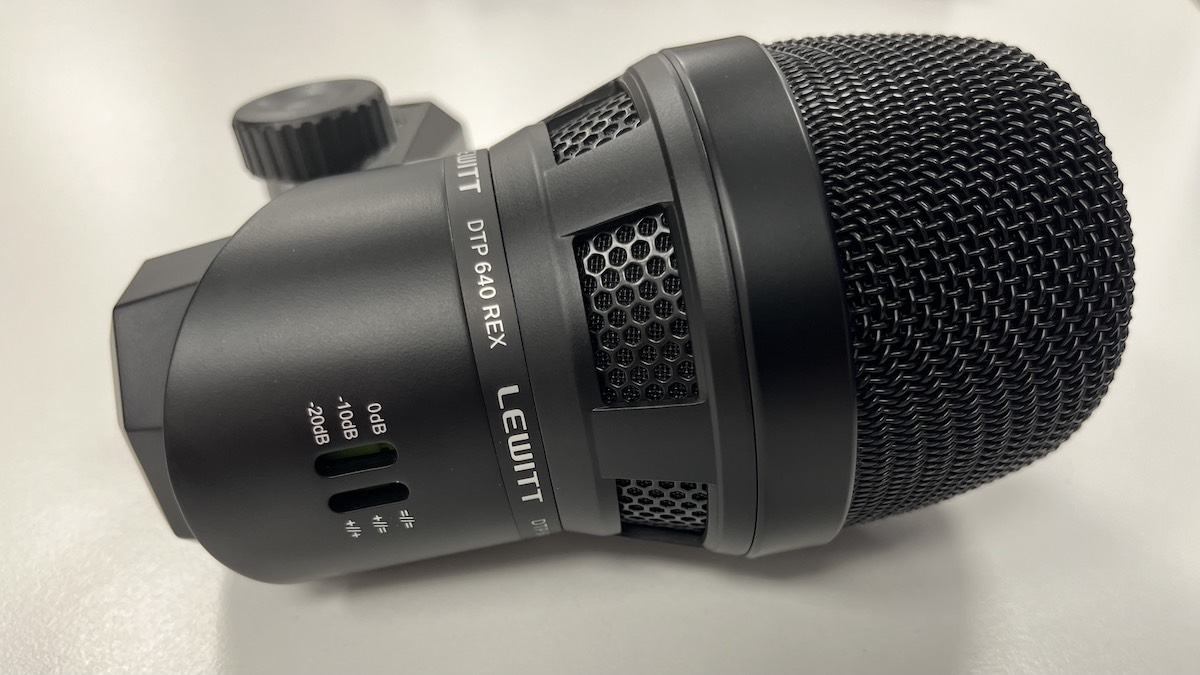
The DTP 640 REX bass drum mic comes packing a few tricks up its sleeve too. The big one is that this isn’t your regular AKG D112/Shure Beta 52A-style bass drum mic - even if visually, the built-in stand thread and angle adjustment thumb screw lean towards the latter.
It actually houses two diaphragms - one dynamic, one condenser, both precisely aligned to avoid phase issues. Both diaphragms produce discrete signals, which are output from a single 5-pin XLR socket, and Lewitt supplies a splitter cable which will allow you to send each signal to its own channel on your interface or mixer. Why would you want to do this? Well, it’s a simplified way of offering the classic dual-mic bass drum sound of a dynamic to capture the beater attack and definition, while the condenser’s wider frequency response delivers the fuller sound of the bass drum shell’s thump.
But, the tone-shaping doesn’t stop there, because it’s also equipped with a two-stage attenuation pad, which will drop the output signal by either -10dB or -20dB if you’ve got a particularly lead-heavy foot. But the real magic comes from the three-position switch for re-voicing the mic’s response.
In the first position (=//=), both capsules are flat, delivering their natural response. In the second position (Dynamic EFR, labelled +//=) the dynamic side of the mic is tailored to give a little more colour, accenting the frequencies you’re likely to dial-in with EQ, via a big lift in the 30-150Hz area, and another boost to the high end between 4-16kHz.
Finally, there’s the third mode (Dual EFR, labelled +//+). Here, there’s a dramatic tonal change to both sides of the mic, with fairly opposing voices. The condenser gets a heavy boost in the low end, and rolls off quite dramatically thereafter, while the dynamic diaphragm is filtered to have its bass removed and top end accented. To put it in scientific terms, in isolation you’ll get a woofier, thumper mic, combined with a thwackier, slappier side. Blend the two together and you’ve got the best of both worlds, with independent control of each element.
It’s a useful inclusion - if you’re working with a live engineer then the first and third modes supply them with a pair of blank canvases, or two distinct yet complementary voices to mix, while the middle option is a great pre-coloured sound if you just want to plug in and get going. In a recording environment, the different voicings allow for either complete transparency, no-fuss plug-and-play capture, or some sonic experimentation.
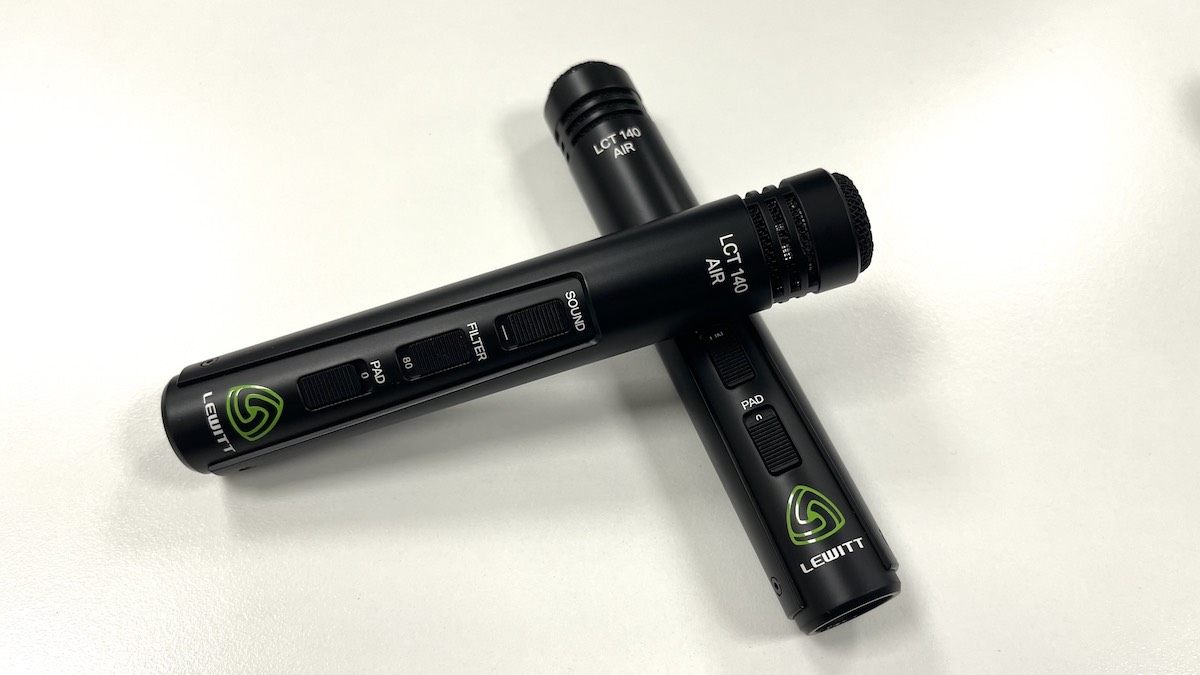
The overhead mics offer a similar level of flexibility, and you’ll notice that these too include three switches offering a -12dB pad, low-cut which sharply filters out from 80hZ and under and the AIR switch. The latter provides a wide treble boost that actually starts to lift in the mid range, but becomes most pronounced with just under 6dB around the 12kHZ area.
With the AIR switch set disengaged, the performance of the LCT 140 AIR is quite flat, and perfectly useable for overheads.
We set ours up in a spaced pair over our kit and recorded the same part with each setting. With the AIR switch engaged, we get a little more sizzle, and perhaps even a slightly wider sound when we hard-pan them on playback.
The low-cut switch is great for fighting unwanted, potentially feedback-inducing frequencies in a live environment, and also works well if you’re using your overheads more as ‘cymbal’ mics than a full representation of the kit. Otherwise, you might want to leave it in the neutral position.
Finally, we have the dynamic mics, which individually retail for a hair under the price of everyone’s go-to ‘instrument’ mic, the Shure SM57. The MTP 440 DM follows a similar physical form to a 57, but with a little more dome to the top, which could arguably help to protect it from accidentally bearing the brunt of a backbeat. This of course comes at a slight cost in terms of size, making it a little more intrusive than the standard, but during our time using it, we didn’t find it to get in the way at all. It’s rugged, too, and while we wouldn’t recommend routinely drop-testing microphones of any kind, we think the metal casing will more than stand up to the rigours of gigging without any problem.
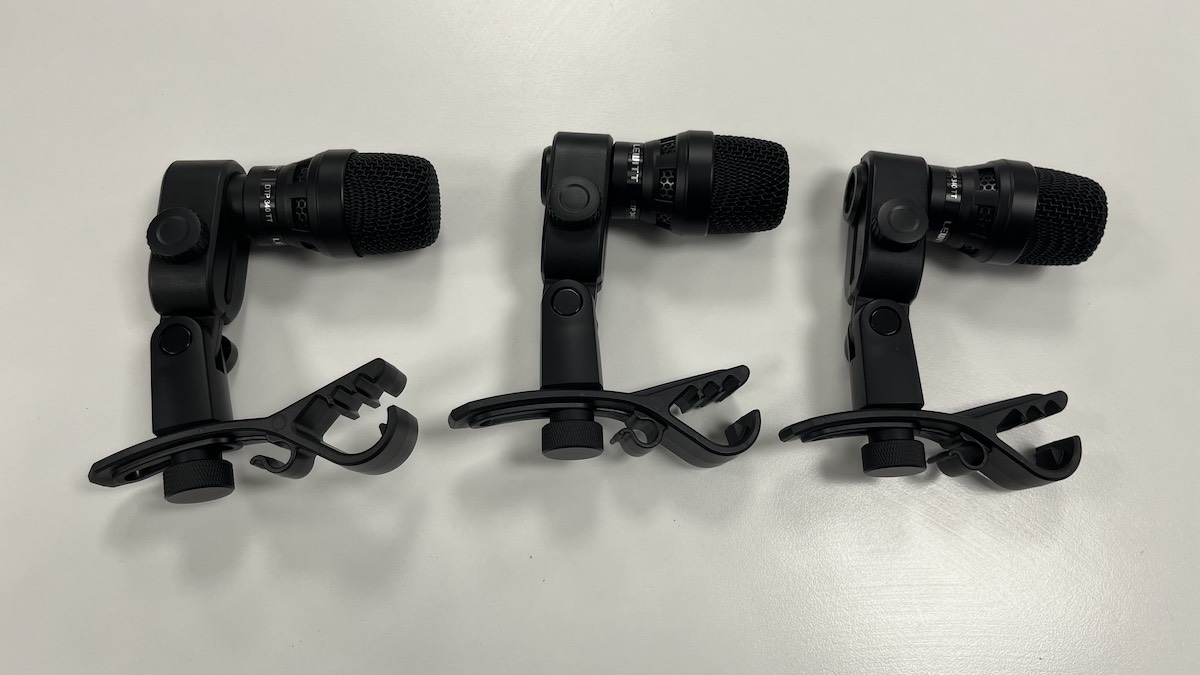
Response wise, it’s very similar to our 57, but with a little more brightness. It’s a very uncoloured sound that isn’t imposing very much of its own character on the sound, and we found it to work equally well as the bottom snare mic. It’s solid, both in terms of sound and its build.
If you’ve ever placed microphones on your toms, you’ll be aware of a couple of things - bleed, and the likely need to EQ them. The first one is, in many ways unavoidable, due to the close proximity of our drums when set up, not forgetting that the drum kit as a whole is an instrument and some bleed is what helps to make it sound natural. However, too much bleed can cause real problems when it comes to processing and balancing the toms, and if it’s really bad then you could end up with phase problems detracting from each drum’s output. So, Lewitt has made the DTP 340 TT mics with a hypercardioid polar pattern. This is tighter than the regular cardioid pattern, so the mic will pick up in a more directional way, eliminating spill from other sources. It’s not going to stop bleed, but it does reduce it, which can really help to keep things cleaner when you have seven mics in a small space.
This is the same pattern used by Audix on its popular D2 and D4 tom microphones, and similarly to those models, the DTP 340 features a more tailored frequency response. Which brings us to the second point about tom mics. Essentially, what you get is a flat mid-range, with peaks either side in the lower and upper frequency ranges. The result is punchy and clear without applying EQ, but with plenty of scope for applying more afterwards if you want to start chipping away at the sometimes-boxy midrange. The DTP 340 is small, but not stubby, making it easy to position without the cable getting too close to your cymbals, or getting into the danger zone on smaller toms.
Lewitt Beat Kit Pro review: Verdict
Lewitt has put together an excellent set with the Beat Kit Pro, and it feels like a collection of mics that has been designed for drums, rather than repurposing already-available, disparate products and putting them in a case.
The DTP 640 REX and LCT 140 AIR offer a lot of useful options that, after some experimentation, will allow you to find your preferred sounds quickly. The snare and tom mics, on the other hand, offer a more instantaneous sound that works, requiring very little tweaking in terms of positioning.
If you intend to use this set live, you’ll want to look after the proprietary cable for the bass drum mic, or consider buying a spare in case you lose it, and if you’re likely to want to use the filter switches on the 640, we’d recommend double checking their positions before you place the mic inside the drum!
Our only real complaint with the Beat Kit Pro relates to the included holders. We placed these on a mix of die-cast and triple-flanged hoops, and fresh out of the box it was a struggle to get the claw to stretch wide enough to grab the rim securely. We managed it, but not without gritting our teeth in fear of breaking it. Admittedly, the holder didn’t break, nor show any real signs of doing so, and we did find that after each one had been placed on a hoop, it became easier to remove/refit it in time.
Overall, the Beat Kit Pro is an impressive, rugged mic set that incorporates – and builds on – some of our favourite design points from popular drum mics, as well as bringing its own identity. It’s no small outlay, but it’s also reasonable for what’s included. We’re confident that it’s an offering that will have you more than covered for both live and recording situations.
Lewitt Beat Kit Pro review: Hands-on demos
Lewitt
Spectre Sound Studios
Trey Xavier
Lewitt Beat Kit Pro review: Specification
- Type: Drum microphone set
- Number of microphones: Seven
- Microphone types: 1X dual-element bass drum microphone (dynamic and condenser), 2x small-diaphragm condensers, 3x dynamic tom microphones, 1x dynamic snare/instrument mic
- Accessories: 2x microphone stand clips, 4x rim-mount holders and clips, ABS gig case, 5-pin XLR cable for DTP 640 REX
- Contact: Lewitt

I'm a freelance member of the MusicRadar team, specialising in drum news, interviews and reviews. I formerly edited Rhythm and Total Guitar here in the UK and have been playing drums for more than 25 years (my arms are very tired). When I'm not working on the site, I can be found on my electronic kit at home, or gigging and depping in function bands and the odd original project.
“The included sample content is not only unique but sonically amazing, as it always was”: Spitfire Audio BBC Radiophonic Workshop review
“Don't kill him - he's Beatle Paul!”: The dramatic birth of Paul McCartney’s greatest post-Beatles song
I’ve looked through all 372 deals in the Thomann Easter Sale - these are the 5 deals I’d grab right now
